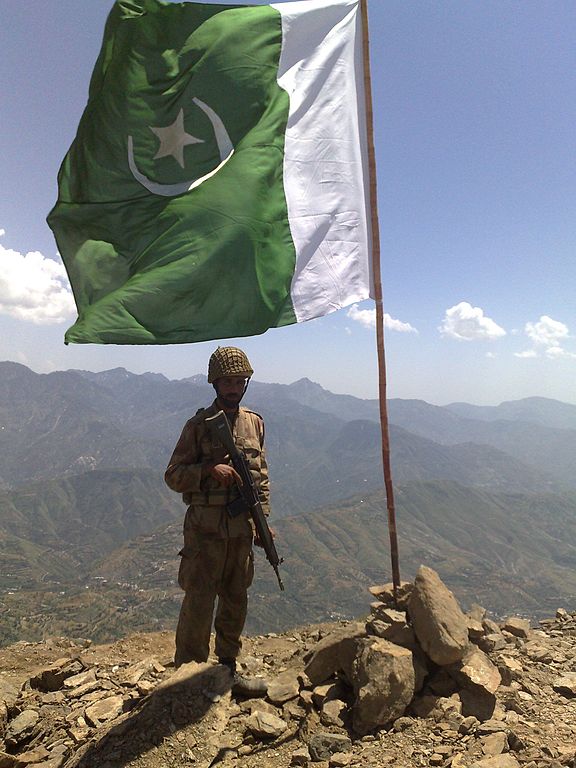
Photo Credit: Al Jazeera English
My last post focused on the domestic implications in Pakistan of the latest revelations about the 1999 Kargil mini-war. Since the crisis is a key point of contention – a sort of Rorschach test, really – in the debate over whether the proliferation of nuclear weapons in South Asia has stabilized or aggravated the India-Pakistan rivalry, it’s also worth taking another look at two important points regarding Kargil’s nuclear dimensions:
Although the fighting remained confined to a relatively small front in northern Kashmir, the Kargil crisis represents the most serious instance of actual military conflict between nuclear-armed belligerents in history. Many experts call it the fourth Indo-Pakistani war and its seriousness has been likened to that of the Cuban missile crisis. Proliferation pessimists regard Pakistan’s role in sparking the confrontation as exemplifying the crisis-stability fragilities emanating from the spread of nuclear weapons and worry that war was only averted by factors outside the nuclear realm. Optimists, on the other hand, view the absence of general hostilities, as well as the evident signs of Indian restraint, as compelling evidence that the caution-inducing properties of nuclear deterrence simply overwhelm the surfeit of powerful and interlocking factors that have generated military conflict between the two countries in the past.
As noted in the previous post, the new disclosures (here and here) about the crisis largely corroborate the points advanced in a 2009 book, Asymmetric Warfare in South Asia: The Causes and Consequences of the Kargil Conflict, that is the most authoritative study of the crisis to emerge to date. One of the book’s major findings is that there was little causal connection between Islamabad’s attainment of an overt nuclear posture in mid-1998 and its actions at Kargil in the opening weeks of 1999. As one of the volume’s authors put it:
The post-1998 nuclear reality did not make Pakistan change its strategy. The reality is quite the opposite: the architects of the Kargil land grab utterly failed to think through the implications of nuclear weapons on the behavior of both their adversary and the international community, the latter of which fundamentally changed its posture toward South Asia after the 1998 nuclear tests.
This judgment is at sharp odds with the Indian consensus that nuclear weapons facilitated Pakistan’s aggressive behavior at Kargil. New Delhi’s official inquiry into the conflict, for example, deduced that Pakistan’s use of proxy jihadi forces in Kashmir in the 1990s and its Kargil venture were rooted in a belief that its nuclear arsenal negated India’s advantage in the conventional balance of power. The inquiry concluded:
Otherwise, it is inconceivable that [Pakistan] could sustain its proxy war against India, inflicting thousands of casualties, without being unduly concerned about India’s ‘conventional superiority.’
General V.P. Malik, India’s army chief during the crisis, likewise avers that nuclear weapons:
played an important role in shaping Pakistan’s military strategy for the Kargil episode….The Pakistani military believed then, as it still does, that it could safely conduct a low-intensity conflict or a limited war in Jammu and Kashmir and that its nuclear capability would prevent a conventional Indian attack.
It is striking that the new revelations, which are quite critical of Musharraf’s thinking in provoking the crisis, are altogether silent about this issue. This absence leads one to conclude that the book’s judgment is substantially correct: Pakistan’s nascent nuclear force had no bearing on the Kargil decision-making.
But the avoidance of all-out war in the crisis prompts a second, more speculative, question: After Kargil, did Musharraf absorb what is an article of faith in the optimist canon: That even a modest nuclear force generates outsized deterrence benefits, thus ensuring to an unprecedented degree Pakistan’s external security vis-à-vis Indian military superiority. Further, did this confidence embolden him to jump into the 2004-07 détente process?
An affirmative answer to these questions would help explain what otherwise appears perplexing: How did Musharraf evolve in a period of a few years from instigating the Kargil crisis to being the prime mover behind the diplomatic negotiations? The evidence on this issue is quite sparse. Optimists can point to the historical parallel of Lavrentiy Beria during the brief interregnum between Josef Stalin’s death in early 1953 and when Nikita Khrushchev emerged as the undisputed Kremlin leader more than a year later. As the brutal chief of the secret police, Beria supervised the Soviet atomic bomb project, which came to fruition in 1949. In the weeks following Stalin’s passing, he urged his Politburo colleagues to pursue a more conciliatory line vis-à-vis the United States. Some historians believe he did so because his intimate knowledge of the nuclear weapons program led him to understand that it, despite its then quite limited size, had decisively shored up Moscow’s security position in the Cold War.
One could plausibly – but far from definitively, given the sharp limits of the empirical record – apply the Beria analogy to Musharraf. But the real problem with this thesis is that the post-Musharraf leadership of the Pakistani army, judging from the on-going buildup of tactical nuclear forces, seems to put little faith in the optimists’ belief that the revolutionary character of nuclear weapons renders territorial conquest much more difficult. While the military establishment has been supportive of the détente process with New Delhi (here and here) over the last two years, it is driven by concerns about rising internal security threats and the precarious condition of the domestic economy. A more fundamental rethinking of Pakistan’s strategic calculus has yet to occur.
More rigorous inquiry into Kargil’s nuclear aspects is surely necessary before more conclusive judgments can be rendered. But it could well be that proliferation pessimists and optimists have both gotten some things wrong. After all, if the nuclear factor had no effect on Kargil decision-making, perhaps it is only natural that its impact is likewise absent on Islamabad’s broader security calculations.
This commentary was originally posted on Chanakya’s Notebook. I invite you to connect with me via Facebook and Twitter.